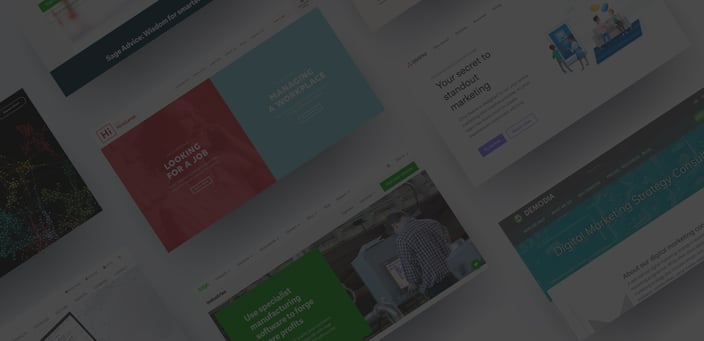
If you’ve shopped around to build your website, you’ve probably heard cost estimates that are all over the map, including some temptingly cheap ones. With templates from places like Wordpress and Wix and a market crowded with freelancers (many with questionable qualifications and unbelievably low prices), it’s easy to get the impression that building your website won’t cost you much, especially if you classify as a “small business.” However, it’s a misconception that small businesses don’t need high-performance websites. So, what is the real cost of building a B2B website?
The truth is, a great B2B website could cost upwards of $20,000 and almost definitely won’t come for less than $5,000. This is because there’s a lot more to the perfect website than a good design.
When you’re building your website, here’s what you’re paying for and what it will do for your business.
Why a Wordpress template won’t do the job
A template from a low-cost website builder might look professional, but it’s performance– not just looks– that your business needs in order to thrive. When you’re budgeting to build your website, focus on what you want the website to do for you, not just how it will look.
You’ve probably heard the saying: “If you buy it cheap, you buy it twice.” It can be tempting to start with a quick and low-priced template for your site. However, if you don’t start with a site that can meet all your objectives, you’ll just end up pouring a lot more money and time into fixing it. As B2B service providers, your target market will have exacting needs and they’re likely to be a bit more savvy. To show them you can deliver the goods, you need to start with a website that’s built for performance and function, not just style.
What a great website includes
A great way to start is to write a requirements brief. Use this document to map out your objectives. What functions must the site perform (e.g., e-commerce, capturing contact information)? Who is the site’s target audience? What do they want, and what content are they looking for to help them make their decisions? How should the site be structured? What are the technical requirements for meeting all your needs, while offering the best user-experience?
As you write your requirements brief, be sure to include how you will measure your success. Once the site is running, you should have a strategy for how to quantify the site’s performance. This means the site must include software for measuring and analysing success. You’ll also need a site that you can easily update and add to, for continuous improvement.
Here’s a quick breakdown of some of the things your site must include:
Site design, including templates and site architecture: Remember, many of your site visitors will only scan your content, so it needs to catch their attention and get your message across quickly and concisely. Your site needs to maximize user experience and capture a lead’s interest from the get-go.
Content creation and planning: This is the meat of your website, what your audience wants to learn from visiting your site. Good content creation will be an ongoing project. However, great content should also be “evergreen,” meaning it will stay relevant and shareable over time.
Loading and migration: To give your users a seamless experience– without running into dead links or getting lost– you’ll need to start with a clear loading and migration plan. Much of this work is very detail-oriented and specific and must be done or checked over manually. Make sure your content migrates and gets loaded correctly the first time, to save yourself money and hassle rebuilding your site later.
SEO that’s optimised for B2B searches: Some small businesses, in a hurry to get their site up and running, gloss over SEO and assume they’ll “get to it later.” Don’t make that mistake. Without optimal SEO– not just urls and headers, but also optimized titles, descriptions, and links– your content won’t live up to its potential.
Analytics and lead capture: If you use any marketing automation or CRM platforms (and I hope you do!), they need to be integrated seamlessly into your site. Your site should also include Google Analytics, at the very minimum, to measure performance. If you’re capturing contacts for your leads, or there’s any e-commerce component to your business, that will add another element of integration.
Why it’s worth it
For B2B small businesses, your website will be your primary interface with the world. You might gain new clients who never physically visit your office and interact with your business entirely online. Would you build a brick-and-mortar shop that looked great, but didn’t have any electricity or climate control? Of course not. Think of your website the same way: invest in high-functioning amenities and not just a sleek design, if you want your virtual space to grow with your business and keep your clients coming back for more.


